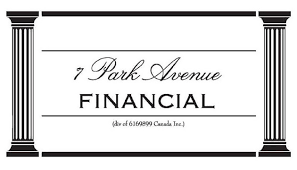|
Practical Guide to Funding Growth with Your Receivables
Confident Cash Flow Using AR-Backed Facilities
You Are Looking for Accounts Receivable Finance Solutions!
The Benefits Of Confidential Accounts Receivable Financing
UPDATED 08/18/2025
You've arrived at the right address! Welcome to 7 Park Avenue Financial
Financing & Cash flow are the biggest issues facing businesses today
Unaware / Dissatisfied with your financing options?
CONTACT US - OUR EXPERTISE / YOUR RESULTS
Call Now! - Direct Line - 416 319 5769 - Let's talk or arrange a meeting to discuss your needs
Email - sprokop@7parkavenuefinancial.com

HOW YOUR BUSINESS CAN USE ACCOUNTS RECEIVABLE FINANCING
7 Park Avenue Financial is Canada’s trusted expert in accounts receivable financing, helping businesses unlock immediate working capital from unpaid invoices. By transforming receivables into reliable cash flow, we enable companies to bridge payment gaps, fund growth, and operate with financial confidence—without adding traditional debt.
Late customer payments slow growth and leave you struggling to cover payroll, suppliers, and daily expenses.
This constant cash squeeze creates stress and forces tough decisions. Accounts receivable financing options transform unpaid invoices into fast cash, putting you back in control. With the right solution, you gain working capital when you need it most—without waiting on customers.
An effective accounts receivable financing solution can boost working capital and improve cash flow.
This becomes even more powerful with Confidential Invoice Discounting (CID), a specialized form of factoring.
Let’s explore how businesses use accounts receivable financing to gain financial flexibility.
How Does a Business Use Accounts Receivable Financing?
When your company uses accounts receivable financing, you enter into an agreement with a bank, asset-based lender, or factoring company.
Receivables are one of the largest and most liquid assets on your balance sheet. They represent money owed to your firm for goods or services already delivered but not yet paid.
Lenders evaluate the quality of these receivables when financing working capital and growth. Asset turnover in receivables helps measure your ability to cover liabilities such as accounts payable.
Three Uncommon Takes on Accounts Receivable Financing Options
-
Many owners overlook that accounts receivable financing can strengthen supplier relationships by ensuring timely payments and even unlocking early-payment discounts.
-
Beyond cash flow, accounts receivable financing options can act as an early-warning system, since lenders often highlight risky customers you might not notice.
-
Financing receivables can sometimes improve valuation in succession or sale planning, since it stabilizes financials and demonstrates reliable cash conversion.
Although receivables are a cost of working capital, converting them into cash is always a challenge.
That’s where banks, alternative lenders, and factoring companies step in to unlock cash flow from unpaid invoices.
With the right facility, your company gains predictable access to working capital.
Supersizing Cash Flow with A/R Financing
This solution can double or even triple immediate cash access compared to traditional financing.
Business owners are often surprised that bank lines of credit rarely match this level of liquidity.
In some cases, firms previously without financing now gain full access to working capital through A/R factoring.
Selling vs. Assigning Receivables: Factoring vs. Loans
Most non-bank receivable financing in Canada is structured as an asset sale.
The business sells receivables to the finance company in exchange for immediate cash.
Advance rates average around 90%, compared to 70% at banks. Same-day funding is common.
Confidential factoring allows you to choose which invoices to finance without obligation.
If not using CID, the factoring company often manages collections directly.
However, businesses still carry bad debt risk unless credit insurance or enhanced factoring structures are used.
How Much Does Factoring Cost?
Factoring fees are typically 1–2 % per month, expressed as a discount fee rather than an interest rate.
CID, or Confidential Invoice Discounting, is popular with SMEs but also used by major corporations.
Even startups benefit, since traditional bank loans are often unavailable.
Large corporations may use securitization, while SMEs turn to factoring for flexibility.
Receivable financing ensures invoices are converted into cash flow without waiting 30–90 days for payments.
This creates an instant cash flow engine to fund daily operations and growth.
Confidentiality: A Key Benefit
Unlike traditional factoring, Confidential factoring allows your firm to control its sales ledger and customer relationships.
Clients remain unaware that receivables are being financed.
This provides a competitive advantage, as suppliers and customers do not see how you fund operations.
How A/R Finance Works
The underwriting process focuses on client quality, invoice size, and payment terms.
Companies with strong customers or government contracts receive better rates.
Days Sales Outstanding (DSO) is a critical factor in pricing and fees.
Daily operations are straightforward.
You issue invoices and receive up to 90% of the value in same-day funding.
When clients pay, you receive the remaining 10%, minus the finance fee.
Many firms see the small reduction in gross margin as worthwhile.
The ability to run and grow the business with consistent cash far outweighs the cost.
Factoring turns receivables into a reliable working capital solution.
Advantages of Confidential Invoice Discounting
-
Fast approval and easy administration
-
Your company manages billing and collections
-
Immediate working capital improves cash flow
-
No fixed payments, unlike loans
-
Flexible, scalable financing tailored to needs
-
No additional collateral required
-
Same-day funding available
Short Case Study
Company: Ontario-based industrial distributor, $18M revenue.
Challenge: 60-day terms to big-box customers strained payroll and supplier payments; bank LOC maxed out.
Solution: Implemented accounts receivable financing options with a 90% advance rate, credit insurance on two weaker buyers, and weekly borrowing-base updates.
Results: Cash conversion improved by 19 days; captured 2% early-pay discounts with two key suppliers; on-time payroll every cycle; added a new $1.2M account without seeking higher bank limits.
Key Takeaways: A/R Financing Solutions
-
Understand eligibility: clean, verifiable B2B invoices and creditworthy buyers drive approvals.
-
Map your borrowing base: advance rates, reserves, and ineligibles determine usable cash.
-
Tighten documentation: signed PODs, timesheets, and approvals unlock faster fundings.
-
Benchmark terms: align payment cycles with payroll and supplier dates to remove gaps.
-
Use insurance strategically: limits on weaker accounts can raise advances and reduce losses.
-
Track KPIs weekly: DSO, dilution, and concentrations reveal risks before they bite.
-
Optimize pricing: compare all-in cost against early-pay discounts and lost-sale risk.
-
Plan covenants early: confirm lien priority and intercreditor details to avoid surprises.
CONCLUSION
You deserve financing that matches the way your business actually runs.
If you’re juggling payables while waiting on customers, 7 Park Avenue Financial will walk you through the right accounts receivable financing options for your industry, your buyers, and your growth plan—plain language, pragmatic structure, and a clean path to cash.
FAQ: Accounts Receivable Financing
What is accounts receivable financing?
It is a financing arrangement where businesses receive immediate cash for unpaid invoices. Banks structure it as loans, while factoring firms buy receivables at a discount.
Do banks offer receivable financing?
Yes. Banks provide it through secured credit lines backed by receivables. However, advance rates are lower and approval is stricter compared to factoring firms.
What are the advantages and disadvantages?
Advantages include faster cash flow, flexible funding, and no long loan approval. Disadvantages include factoring fees and continued exposure to bad debt risk.
Despite past stigma, thousands of businesses—SMEs and corporations alike—use factoring today to stabilize cash flow and fund growth.
STATISTICS:
-
North American growth corporates show DSO tiers ~37–53 days depending on performance band—useful benchmarking when modelling advances. Visa Corporate
-
Recent working capital studies highlight rising DSO across sectors, underscoring the need for liquidity tools like AR funding. Storyblokimage.uk.info.pwc.com
-
Canada’s reverse-factoring (supplier early pay) market is expanding rapidly, signalling broader adoption of receivables-linked financing. Grand View Research
-
Canada’s factoring services market shows double-digit growth expectations through 2030, reflecting increased use by SMEs. Grand View Research
-
B2B payment practices research in Canada points to ongoing late-payment pressures impacting cash conversion. AtradiusAtradius
Citations
- American Factoring Association. "Industry Statistics and Trends Report." American Factoring Association, 2024. https://americanfactoring.org
- Canadian Association of Commercial Finance. "Small Business Cash Flow Survey." CACF Research Division, 2024. https://cacf.ca
- Intuit QuickBooks. "Small Business Payment Report: Canada Edition." Intuit Canada Limited, 2023. https://quickbooks.intuit.ca
- Statistics Canada. "Survey on Financing and Growth of Small and Medium Enterprises." Government of Canada, 2024. https://statcan.gc.ca
- Federal Reserve Bank. "Small Business Credit Survey: Report on Employer Firms." Federal Reserve System, 2024. https://federalreserve.gov
- 7 Park Avenue Financial ." Account Receivable Finance " .https://medium.com/@stanprokop/the-hidden-financing-solution-account-receivable-finance-for-growing-businesses-79bc87955525

' Canadian Business Financing With The Intelligent Use Of Experience '
STAN PROKOP
7 Park Avenue Financial/Copyright/2025

ABOUT THE AUTHOR: Stan Prokop is the founder of 7 Park Avenue Financial and a recognized expert on Canadian Business Financing. Since 2004 Stan has helped hundreds of small, medium and large organizations achieve the financing they need to survive and grow. He has decades of credit and lending experience working for firms such as Hewlett Packard / Cable & Wireless / Ashland Oil
|